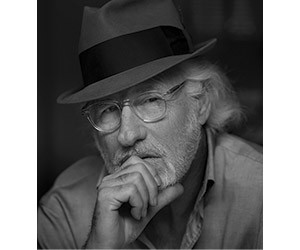Celebrated former San Francisco Chronicle pop music critic Joel Selvin’s 14 books on music and culture to date include "San Francisco: The Musical History Tour," and co-authored with Van Halen lead singer Sammy Hagar, the best-selling "Red: My Uncensored Life in Rock."
Published last year, his latest work, "Altamont: The Rolling Stones, The Hells Angels, and the Inside Story of Rock’s Darkest Day" unsparingly demystifies the root causes and aftermath surrounding the violent and murderous Altamont Speedway Free Festival Dec. 6, 1969.
Selvin, who dropped out of Berkeley High School in 1967, experienced the Fillmore on acid as a teenager, and after starting out freelancing, went from Chronicle copy clerk to the daily’s head music writer, skipped the concert.
“I knew better,” said Selvin by phone from San Francisco. “From 1965 onward, I had seen free concerts in Golden Gate Park go from happy hippie frolic to drunken ordeals, and so the idea of watching The Rolling Stones on a hillside with several hundred thousand people did not strike me as a good idea.”
Selvin missed little else in his 30-plus years on the San Francisco scene. “From Bob Marley’s U.S. debut to The Band’s Last Waltz at the Winterland Ballroom, I covered whatever was happening in music.”
His experiences began at the legendary Fillmore Auditorium. Opened in 1912, in the 1950s the venue staged James Brown, Ike & Tina Turner and other African-American stars. Then, in 1965, concert promoter Bill Graham staged the first of several benefits for the satirical San Francisco Mime Troupe at the Fillmore. Bringing acts such as Jefferson Airplane and The Warlocks (later, the Grateful Dead), Graham ignited a cultural revolution.
“The late hippie visionary and LSD evangelist Chet Helms described ‘a Dionysian revel,’ where bands on the postage-stamp stage became one with the audience amid swirling colored lights projected from above,” Selvin said. “The Fillmore, along with Helms’ Avalon Ballroom, created the template for the future of rock concerts. My first time there, I heard The Who starting their mini-opera 'A Quick One While He’s Away' as I came up the stairs.”
From around 1965 to 1968, the Fillmore was headquarters for psychedelic acid rock shows and virtually every major act of the day.
“Graham’s raw ambition had huge impact,” Selvin said. “He lifted San Francisco to high importance on the music map.”
Gone, along with Graham himself, killed in a 1991 helicopter crash, are nearby Fillmore West, and NYC’s Fillmore East, both opened in 1968. The Avalon became an ad agency last year, but several renovations later, the 1,100-seat Fillmore endures, with captivating period memorabilia.
Other group-capable heirlooms noted by Selvin include the MatrixFillmore, opened in 1965 by Jefferson Airplane’s Marty Balin; Bimbo’s 365 Club, intact from 1931; and 1972 Mill Valley institution Sweetwater Music Hall.
And Altamont? “It’s fenced off, but you can see the old grandstands from the freeway,” said Selvin, adding that, “it was a disaster, but not everybody had a bad time.”




